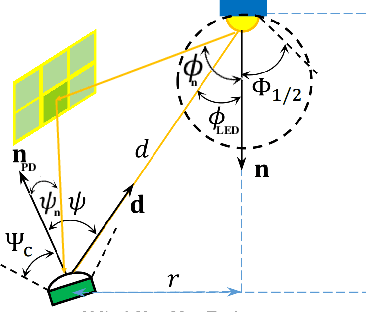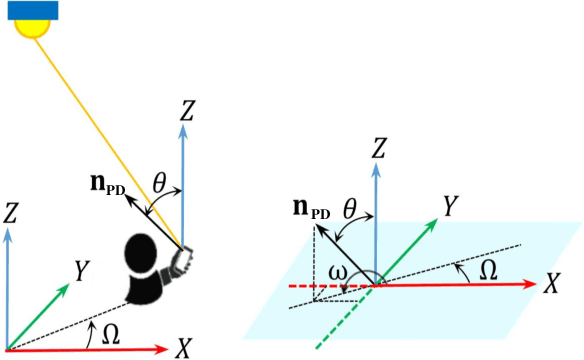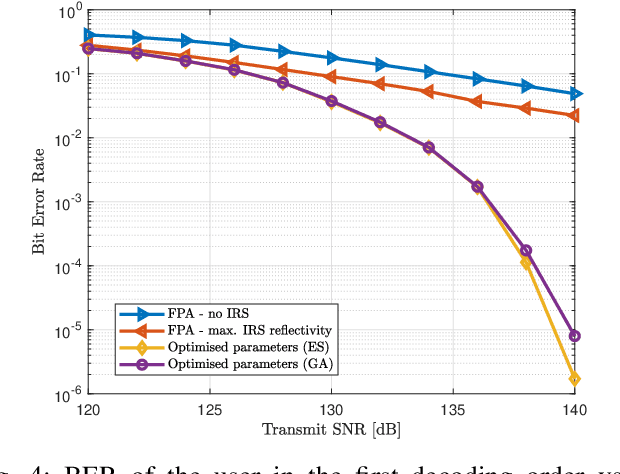Intelligent Reflecting Surfaces for Enhanced NOMA-based Visible Light Communications
Paper and Code
Nov 08, 2021



The emerging intelligent reflecting surface (IRS) technology introduces the potential of controlled light propagation in visible light communication (VLC) systems. This concept opens the door for new applications in which the channel itself can be altered to achieve specific key performance indicators. In this paper, for the first time in the open literature, we investigate the role that IRSs can play in enhancing the link reliability in VLC systems employing non-orthogonal multiple access (NOMA). We propose a framework for the joint optimisation of the NOMA and IRS parameters and show that it provides significant enhancements in link reliability. The enhancement is even more pronounced when the VLC channel is subject to blockage and random device orientation.
 Add to Chrome
Add to Chrome Add to Firefox
Add to Firefox Add to Edge
Add to Edge